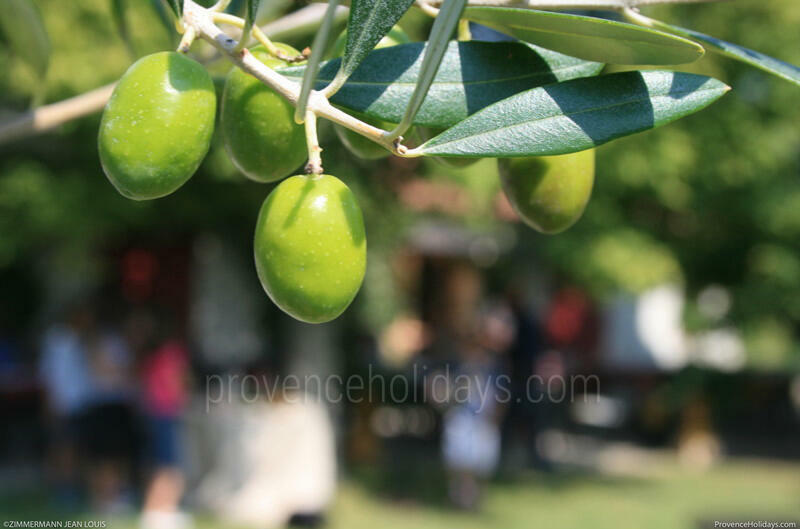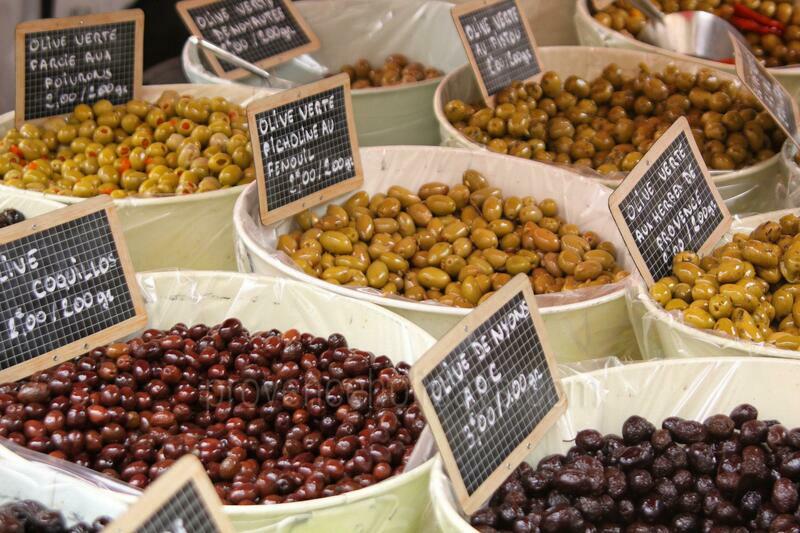Olives
History
One of the oldest cultivated fruits and present in the Bible and mythology, the olive is a symbol of peace and wisdom throughout the world.
Originating in Asia nearly 14,000 years ago, the olive tree is said to have begun to be cultivated in Crete between 3,500 to 5,000 BC. It thrives in the Mediterranean climate because it is drought tolerant, needs plenty of sun and grows everywhere, regardless of the soil. The Phocaeans introduced it to Provence almost 2,500 years ago when Massilia, now Marseille, was founded.
For a comprehensive guide on olive trees, please see the following link: https://happydiyhome.com/olive-trees/
Varieties and Flavours
Since 2006, the AOC "Huile d'olive de Provence" label has preserved and certified the quality of olive production in more than one hundred communes in the Vaucluse, located between Mont Ventoux and the Luberon.
One tree gives between 15 and 20 kilos of olives and it takes 4 to 6 kilos of olives to obtain 1 litre of oil.
Olives are used to produce oil and for the table, as an aperitif or in cooking.
Among the main varieties cultivated in Provence, there are :
- Aglandau: also called "verdale de Carpentras", grown in the Vaucluse, Var and Bouches-du-Rhône. It is the most widely used variety in France for the production of a fruity and very smooth oil, with artichoke aromas, slightly spicy and bitter. This variety can also be used for the table in the form of broken green olives.
- Picholine: cultivated throughout the South and the most widespread variety in France. For oil or for the table.
- Tanche: cultivated in the Drôme and the Alpes de Haute-Provence. Very pleasant in the mouth thanks to its notes of hazelnut and apple, this AOC black olive can be eaten at the table or in oil.
- Lucques: grown in the Hérault region, mainly used for canning.
- Caillette: grown in the Alpes-Maritimes, is the little olive of Nice.
- Grossane: grown in the Bouches-du-Rhône. Used for a sweet olive oil with butter, citrus and hazelnut aromas, it is particularly appreciated for its pulpy flesh with hazelnut and butter flavours.
- Bouteillan: grown in the Var. Used mainly in the form of oil, it has a clear, limpid colour and is appreciated for its herbaceous flavours with fruity notes, apple and pear aromas.
The Question on Everyone's Mind
Are green and black olives two different species?
Well, no! It is the same fruit! The difference in colour is explained by the degree of ripening. The green olive is harvested as soon as it reaches the right size, before ripening has begun. The black olive is harvested when the fruit is ripe.


How to Eat Them
After harvesting, the olive must macerate and undergo several treatments before it can be consumed.
A benchmark of Mediterranean cuisine, olives are consumed in the form of oil which adds flavour to dishes and salads and perfectly flavours meat, fish and other vegetables when cooked. And in the form of tapenade, black or green, with several ingredients like capers and anchovies, sometimes with garlic or pine nuts. A must for summer aperitifs in Provence!
A Recipe
Black Tapenade:
|
Number of guests: 5 Preparation time: 10 minutes Difficulty: Easy Cost: € |
200g pitted black olives |
1) Peel half a clove of garlic and put it in a blender with the 200g of pitted black olives.
2) Drain the capers and anchovies and add them to the blender.
3) Pour in a little lemon juice. Blend everything together.
4) Gradually add the equivalent of a tablespoon.
5) The texture should become thicker and thicker. Continue to blend, checking the thickness.
6) Add the lemon juice and season with a little pepper and a pinch of salt (be careful, the capers and anchovies are already salty).
7) Then enjoy the tapenade on toast.
With this simple and delicious recipe, you will impress your friends and family!
Where to Eat Them
At the restaurant L'Esplan, ![]() 15 Place de l'Esplan, 26130 Saint Paul Trois Châteaux.
15 Place de l'Esplan, 26130 Saint Paul Trois Châteaux.
In a warm setting, this restaurant offers refined cuisine made from local products accompanied by Nyons olive oil.
At Bœuf qui fume, ![]() 450 Avenue Aristide Briand, Robion.
450 Avenue Aristide Briand, Robion.
To enjoy a meal based around the olive.
Where to Buy Them
At Moulin du Clos des Jeannons, ![]() 1729 route de Saint-Pantaléon Le Haut Tourteron, Gordes
1729 route de Saint-Pantaléon Le Haut Tourteron, Gordes
This family business crushes olives with a traditional stone millstone to create local products with enchanting aromas. It offers a wide range of quality products for sale: herbal tea, soap, cookery books, honey, olives and home perfumes.
At l'ombre de l'Olivier, ![]() 90 Boulevard de la République, 84240 La Tour d'Aigues.
90 Boulevard de la République, 84240 La Tour d'Aigues.
The passion for olive oil drives this shop, located in the Luberon, which offers a wide range of carefully selected products: cosmetics, delicatessen, gourmet boxes and more.
Of course, you will also find olive products in most Provençal markets.
Olive Events
Between the end of November and the end of January.
Many events are organised in Provence around this flagship product.
